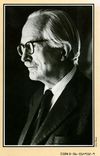Death in Captivity: Difference between revisions
imported>Hayford Peirce (more) |
imported>Hayford Peirce (would like to finish this off before I forget what it was about) |
||
| Line 4: | Line 4: | ||
'''Death in Captivity''' is a mystery novel by the British crime writer [[Michael Gilbert]], first published in the United Kingdom in 1952 by [[Hodder and Stoughton]] and in the United States by [[Harper & Row|Harper & Brothers]]. It was Gilbert's sixth novel and, unlike his previous ones, does not feature [[Inspector Hazlerigg|Chief Inspector Hazlerigg]] in any way. Nor is it set in Gilbert's usual London or France. Instead, while it bears all the forms of the classical detective story, it is also a harrowing tale of suspense that takes place in a 1943 prisoner of war camp for British officers in northern Italy, not the typical enormous country house in the English countryside. | '''Death in Captivity''' is a mystery novel by the British crime writer [[Michael Gilbert]], first published in the United Kingdom in 1952 by [[Hodder and Stoughton]] and in the United States by [[Harper & Row|Harper & Brothers]]. It was Gilbert's sixth novel and, unlike his previous ones, does not feature [[Inspector Hazlerigg|Chief Inspector Hazlerigg]] in any way. Nor is it set in Gilbert's usual London or France. Instead, while it bears all the forms of the classical detective story, it is also a harrowing tale of suspense that takes place in a 1943 prisoner of war camp for British officers in northern Italy, not the typical enormous country house in the English countryside. | ||
==Plot== | |||
The setting is London about 1950. Victoria Lamartine, a young French woman working at a small family hotel in [[Soho]], has been | |||
==Reception and Appraisals== | |||
[[Anthony Boucher]] of the ''[[New York Times]]'' said that "the first 1952 book to reach this reviewer's desk is one which wouldn't disgrace any Best-of-the-Year list" and went on to say that it concerned:<blockquote>...an important murder trial, with real understanding of courtroom psychology and technique. But the camera eye of the author constantly flashes from this... to the efforts of two likable and believable amateurs detectives who are striving to assemble last-minute evidence for the defense; and their adventures, involving maquisards and collaborators from the past, and gold-smugglers and secret agents of the present, make a thriller as wildly exciting as the courtroom scenes are suavely persuasive. It's hard to recall any technical tour de force of fusion quite so admirably integrated as this. Mr. Gilbert is one of the most accomplished leaders of the new British school of murder writing.<ref>''Criminals at Large'', "The New York Times", 6 January 1952 at [https://timesmachine.nytimes.com/timesmachine/1952/01/06/93555599.html?action=click&contentCollection=Archives&module=ArticleEndCTA®ion=ArchiveBody&pgtype=article&pageNumber=121]</ref></blockquote> | |||
A much later appraisal comes from [[Jacques Barzun|Barzun]] and Taylor's encyclopedic ''[[A Catalogue of Crime|Catalogue of Crime]]'': | |||
<blockquote>There have been many mystery tales based upon the activities of the French Resistance; few have been good, and fewer stand up to current rereading. This is one of the very best... Scene of the crime is a small London hotel. Counsel of both sides are excellently portrayed. A gripping tale: one of the author's triumphs.<ref>[[Jacques Barzun]] & Wendell Hertig Taylor, ''A Catalogue of Crime'',[[Harper & Row]], New York, "Second Impression Corrected", 1973, page 208</ref></blockquote> | |||
== Notes == | |||
<references/> | |||
Revision as of 16:25, 3 February 2017
Death in Captivity is a mystery novel by the British crime writer Michael Gilbert, first published in the United Kingdom in 1952 by Hodder and Stoughton and in the United States by Harper & Brothers. It was Gilbert's sixth novel and, unlike his previous ones, does not feature Chief Inspector Hazlerigg in any way. Nor is it set in Gilbert's usual London or France. Instead, while it bears all the forms of the classical detective story, it is also a harrowing tale of suspense that takes place in a 1943 prisoner of war camp for British officers in northern Italy, not the typical enormous country house in the English countryside.
Plot
The setting is London about 1950. Victoria Lamartine, a young French woman working at a small family hotel in Soho, has been
Reception and Appraisals
Anthony Boucher of the New York Times said that "the first 1952 book to reach this reviewer's desk is one which wouldn't disgrace any Best-of-the-Year list" and went on to say that it concerned:
...an important murder trial, with real understanding of courtroom psychology and technique. But the camera eye of the author constantly flashes from this... to the efforts of two likable and believable amateurs detectives who are striving to assemble last-minute evidence for the defense; and their adventures, involving maquisards and collaborators from the past, and gold-smugglers and secret agents of the present, make a thriller as wildly exciting as the courtroom scenes are suavely persuasive. It's hard to recall any technical tour de force of fusion quite so admirably integrated as this. Mr. Gilbert is one of the most accomplished leaders of the new British school of murder writing.[1]
A much later appraisal comes from Barzun and Taylor's encyclopedic Catalogue of Crime:
There have been many mystery tales based upon the activities of the French Resistance; few have been good, and fewer stand up to current rereading. This is one of the very best... Scene of the crime is a small London hotel. Counsel of both sides are excellently portrayed. A gripping tale: one of the author's triumphs.[2]
Notes
- ↑ Criminals at Large, "The New York Times", 6 January 1952 at [1]
- ↑ Jacques Barzun & Wendell Hertig Taylor, A Catalogue of Crime,Harper & Row, New York, "Second Impression Corrected", 1973, page 208
